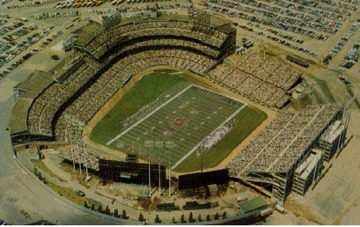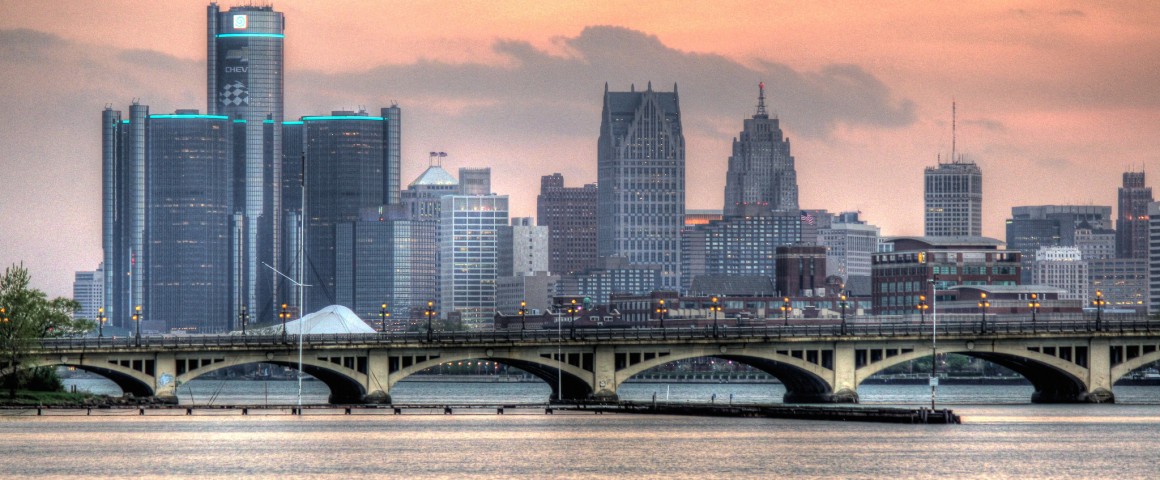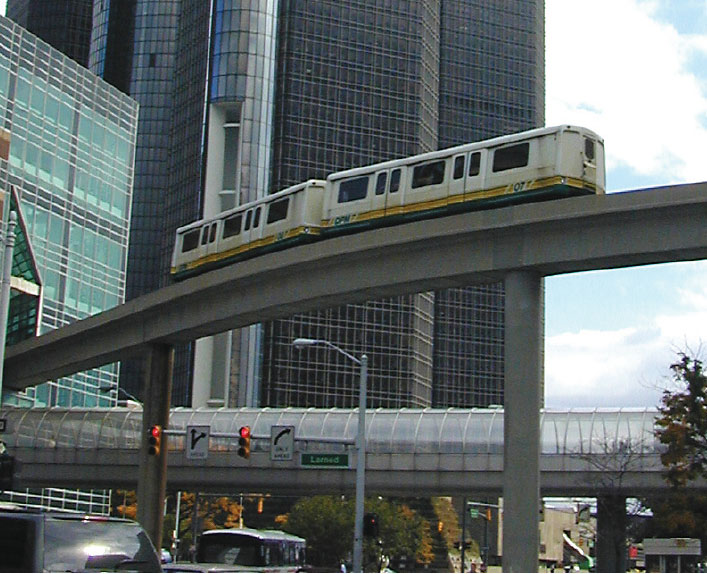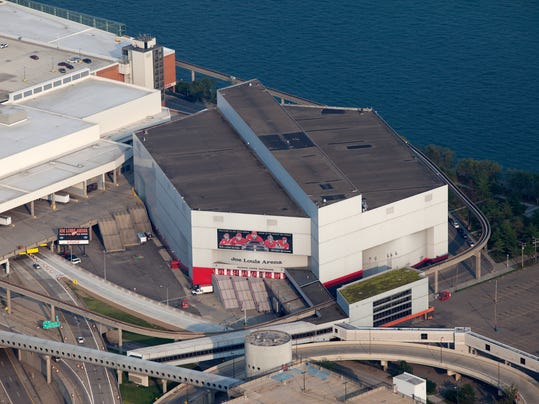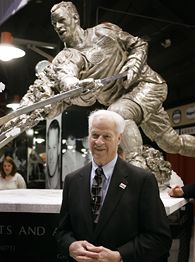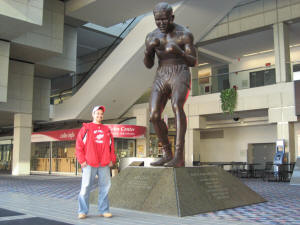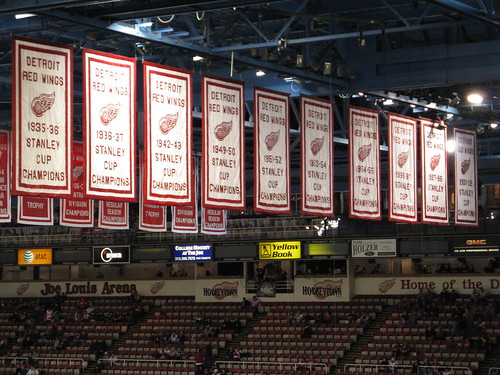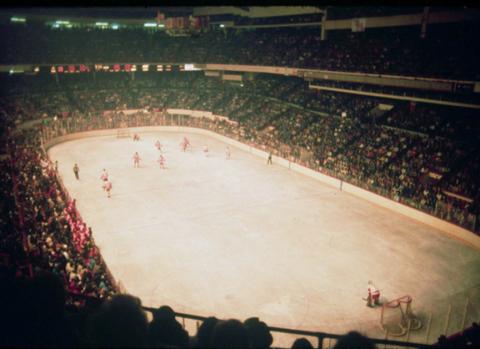Left to right: Jorge Posada, Yogi Berra,
Reggie Jackson and Joe Girardi
January 1: Mario Cuomo, 82, former outfielder in the Pittsburgh Pirates' system, Governor of New York 1983 to 1994, father of current Governor Andrew Cuomo.
January 3: Allie Sherman, 91, one of the 1st lefthanded quarterbacks in the NFL, for the Philadelphia Eagles, later an assistant coach on the New York Giants' 1956 NFL Championship, head coach of their team that reached the 1961, '62 and '63 Championship Games, but lost them all, later a studio analyst for CBS Sports.
January 4: Stu Miller, 87, 1958 National League ERA leader, 1961 NL saves leader, 1962 Pennant winner with San Francisco Giants, 1963 American League saves leader, 1966 World Champion with Baltimore Orioles, in 1967 gave up Mickey Mantle's 500th career home run. Named to Orioles' team Hall of Fame.
January 4: Hank Peters, 90, legendary baseball executive, built Orioles' 1983 World Champions.
January 4: Stuart Scott, 49, ESPN anchor, after a public battle with cancer.
January 7: Jethro Pugh, 70, defensive tackle won 1971 and '77 NFL Championships with the Dallas Cowboys (Super Bowls VI and XII), but probably best known for getting blocked by Jerry Kramer to give Bart Starr room to score on a quarterback sneak to win the 1967 NFL Championship for the Green Bay Packers in the "Ice Bowl."
January 7: Jean-Paul Parise, 67, NHL All-Star, his overtime goal sent the Islanders into the next round of the 1975 Playoffs, eliminating the Rangers, also starred for the Minnesota North Stars, father of NHL All-Star (and former New Jersey Devil) Zach Parise.
January 9: Roy Tarpley, 50, starred for the Dallas Mavericks, but banned from the NBA for continued violations of their drug policy. Sued the NBA, claiming his addiction was a disability and thus he couldn't be fired under the Americans with Disabilities Act. The suit was settled out of court, so we still don't know if such a suit is viable. His health was likely compromised even though he eventually stopped using drugs.
January 16: Ray Lumpp, 91, played for the Knick teams that reached the 1951 and '52 NBA Finals.
January 23: Ernie Banks, 83, Hall of Fame shortstop and 1st baseman for the Chicago Cubs. 500 Home Run Club. Number 14 retired. All-Century Team.
January 25: Bill Monbouquette, 78, All-Star pitcher, mainly for Boston Red Sox, threw no-hitter in 1962, briefly with Yankees in 1968.
January 27: Rocky Bridges, 87, All-Star 3rd baseman, member of Brooklyn Dodgers' 1951 close-call team and 1952 Pennant winners, an original Los Angeles Angel in 1961.
January 27: Al Severinsen, 70, pitcher for the Baltimore team that lost the 1969 World Series to the Mets.
January 27: Charlie Williams, 67, pitcher the Mets traded to the Giants for Willie Mays in 1972.
February 1: Ann Mara, 85, widow of Wellington Mara and thus matriarch of the New York Giants football team.
February 1: Udo Lattek, 80, managed Bayern Munich to 6 Bundesliga (German soccer) titles and Borussia Mönchengladbach to 3 others, also won the 1974 European Cup (the tournament now called the UEFA Champions League) with Bayern.
February 2: Dave Bergman, 61, 1st baseman, won World Series rings with the Yankees in 1977 and the Detroit Tigers in 1984.
February 7: Dean Smith, 83, from 1962 to 1997 coached the University of North Carolina to 17 Atlantic Coast Conference regular-season basketball championships, 13 ACC Tournament wins, 11 NCAA Final Fours and the 1982 and 1993 National Championships, winning more games than any coach before him (879), and also coaching the U.S. team to the 1976 Olympic Gold Medal.
February 9: Ed Sabol, 98, elected to the Pro Football Hall of Fame as a "contributor," and it was a pretty important contribution, as he founded NFL Films. Without that, much of the league's visual history might have been lost. If not for NFL Films, we might not have Major League Baseball Productions or the NBA and NHL equivalents.
February 9: Claude Ruel, 76, defenseman whose playing career was ended at age 20 by an eye injury, coached the Montreal Canadiens to the 1969 Stanley Cup.
February 10: Don Johnson, 88, journeyman pitcher who debuted with the Yankees in 1947, although didn't last long enough to get on the World Series roster. One of the last 100 veterans of both World War II and Major League Baseball.
February 11: Ray Hathaway, 98, pitched for the Dodgers in 1945, won 5 Pennants as a minor-league manager.
February 11: Jerry Tarkanian, 84, controversial coach led the University of Nevada at Las Vegas (UNLV) to the National Championship in 1990 and nearly again in 1991.
February 12: Alison Gordon, 72, became MLB's 1st full-time female beat writer in 1979, covering the Toronto Blue Jays for the Toronto Star from then until 1984.
February 15: Wendell Kim, 64, became the 1st Korean-American to wear a MLB uniform, with the Pennant-winning Giants in 1989. Also coached with the Red Sox.
February 18: Jerome Kersey, 52, All-Star helped the Portland Trail Blazers reach the 1990 and '92 NBA Finals.
February 19: Gary Woods, 60, outfielder who hit the 1st home run in Blue Jays history in their snow-strewn 1977 opener, later a big-league scout.
February 21: Frank Bathgate, 85, played 2 NHL games, both with the Rangers, alongside his brother, Hall-of-Famer Andy Bathgate.
February 24: Gary Sittler, 62, defenseman played 5 games in the WHA in 1974-75 with the Michigan Stags, younger brother of Hall-of-Famer Darryl Sittler.
February 26: Earl Lloyd, 86, became the 1st black player to appear in an NBA game with the 1950-51 Washington Capitols, won the 1955 NBA Championship with the Syracuse Nationals, elected to the Basketball Hall of Fame.
February 28: Ed Modzelewski, 86, running back led the University of Maryland to an undefeated season in 1951, served in the Air Force during the Korean War, won NFL Championship as a rookie with the 1955 Cleveland Browns. His brother Dick Modzelewski played for the giants.
February 28: Anthony Mason, 49, All-Star played on the early 1990s Knicks, including in the 1994 NBA Finals.
March 1: Jeff McKnight, 52, jack of all trades and master of none for the troubled early 1990s Mets, died from leukemia.
March 1: Minnie Miñoso, Chicago White Sox legend, outfielder who should be in the Hall of Fame even if he wasn't the 1st black Hispanic player in the majors, Number 9 retired.
March 2: Dave Mackay, 80, rugged defender who led Edinburgh-based Heart of Midlothian (a.k.a. "Hearts") to the Scottish league title in 1958. He also led Middlesex-based (not in North London until 1965) Tottenham Hotspur to the 1961 League and FA Cup Double, "Spurs" to another FA Cup in 1962, the European Cup Winners' Cup in 1963, another FA Cup in 1967. He managed Derby County to the 1975 League title, and also won 2 Egyptian league titles with Cairo-based Zamalek.
March 13: Al Rosen, 91, member of the Cleveland Indians' 1948 World Champions and 1954 Pennant winners, 1953 AL MVP when he nearly won the Triple Crown, executive who built the 1978 World Champion Yankees, the 1986 NL West Champion Houston Astros and the 1989 NL Champion Giants.
March 23: Nick Peters, 75, covered the MLB Giants for their 1st half-century in San Francisco, elected to the sportswriters' wing of the Hall of Fame.
March 27: Rod Hundley, All-Star with the Minneapolis/Los Angeles Lakers, reaching the NBA Finals in 1959, '62 and '63, "Hot Rod" was later a Hall of Fame broadcaster for the Utah Jazz.
March 31: Chuck Bednarik, 89, center and linebacker was a waist-gunner on a World War II bomber, "last of the sixty-minute men," starred on 1949 and 1960 NFL Champion Philadelphia Eagles.
April 1: Eddie LeBaron, 85, 5-foot-7 quarterback may be the only player revered by fans of the Washington Redskins and the Dallas Cowboys, All-Pro for 1950s 'Skins, member of their Ring of Fame, 1st quarterback for expansion Cowboys in 1960.
April 1: J.D. Smith, 82, All-Pro running back for the 1950s 49ers.
April 4: Elmer Lach, 97, Hall of Fame center for the Canadiens, won Stanley Cups in 1944, '46 and '53, won the Hart Trophy as NHL MVP in 1945, and the Ross Trophy as leading scorer in 1945 and '48, the last surviving member of the "Punch Line" with Maurice "Rocket" Richard and Hector "Toe" Blake, Number 16 retired.
April 5: Lon Simmons, 91, Hall of Fame broadcaster for the MLB Giants, the Oakland Athletics and the San Francisco 49ers.
April 6: Art Powell, 78, receiver was an original New York Jet (then called the New York Titans) in 1960, was a 4-time AFL All-Star for them and the Oakland Raiders, named to the AFL's All-Time Team.
April 6: Dollard St. Laurent, 85, defenseman won the Stanley Cup with the Canadiens in 1958, '59 and '60, and with the Chicago Blackhawks in 1961, making 4 straight Cups, but with 2 different teams.
April 10: Jim Mutscheller, 85, one of the 1st true tight ends, All-Pro helped the Baltimore Colts win the 1958 and '59 NFL Championships.
April 10: Lauren Hill, 19, Mount St. Joseph University basketball player was stricken with brain cancer, became an advocate for research before her death.
April 16: Lee Remmel, 90, saw every game the Green Bay Packers played for 62 years, first as a sportswriter, then as the team's official historian, was elected to their Hall of Fame. One of the few journalists to have covered each of the 1st 49 Super Bowls.
April 17: Jaroslav Holík, 72, hockey player won World Championship with Czechoslovakia in 1972, father of Devils star Bobby Holík.
April 20: Bob St. Clair, 84, Hall of Fame offensive tackle for the San Francisco 49ers in the 1950s, they retired his Number 70.
April 25: Jim Fanning, 87, 1st general manager of the Montreal Expos in 1969, managed them to NL East title in 1981, the only one the now-Washington Nationals won in Montreal. (MLB officially counts strike-shortened 1981, but not strike-ended 1994.)
April 26: Bill Valentine, 82, former AL umpire, 1st ump to throw Mantle out of a game (in 1954 for arguing a called 3rd strike), umpired the 1965 All-Star Game, was behind the plate for Satchel Paige's last game when he became MLB's oldest player (59) in 1965, and for Tony Conigliaro's beaning in 1967.
April 26: Marcel Pronovost, 84, Hall of Fame defenseman won the Stanley Cup with the 1952, '54 and '55 Detroit Red Wings and the 1967 Toronto Maple Leafs, won 3 more Cup rings as a scout for the Devils.
April 27: Gene Fullmer, 83, Middleweight Champion of the World for 4 months in 1957, and again from 1959 to 1962.
May 12: Bill Guthridge, 77, longtime assistant to Dean Smith at North Carolina, succeeded him as head coach, led them to the Final Four in 1998 and 2000.
May 14: Earl Averill Jr., 83, catcher, son of a Hall-of-Famer, an original 1961 Angel, in 1962 tied a MLB record by reaching base in 17 straight plate appearances.
May 15: Garo Yepremian, 70, Cyprus native kicked the winning field goal in the longest game in NFL history, putting the Miami Dolphins over the Kansas City Chiefs on Christmas Day 1971. Helped Dolphins win 1972 and '73 NFL Championships, but nearly ruined their undefeated season with a botched field goal attempt late in Super Bowl VII.
May 21: Fred Gladding, 78, notoriously poor hitter even by pitchers' standards (1-for-63, or .016), but is Tigers' all-time winning percentage leader, led NL in saves in 1969 with Houston Astros, mentioned in Jim Bouton's Ball Four.
May 22: Marques Haynes, 89, Hall of Fame basketball player for the Harlem Globetrotters from 1947 to 1953 and again from 1972 to 1979, ran his own team, the Harlem Wizards.
May 26: Walter Byers, 83, executive director of the NCAA from 1951 to 1988.
May 27: John Siegal, 97, a 2-way end for the Chicago Bears, the last survivor of their 1941 and 1943 NFL Championship teams.
May 30: Lennie Merullo, 98, shortstop was the last surviving player from the Cubs' last World Series appearance in 1945.
June 3: Clarence "Bevo" Francis, 82, in 1954 played for Rio Grand College, an NAIA school, and scored 113 points, a single-game record that stood for 58 years, was drafted by the Philadelphia Warriors, but chose to get a real job, which, in those days, may have paid more.
June 14: José Ely de Miranda, a.k.a. Zito, 82, midfielder starred for Santos, winning the Copa Libertadores alongside Pelé in 1962 and '63, and the 1958 and '62 World Cups with Brazil (also alongside Pelé). With his death, Pelé and Mario Zagallo are the last living members of the '58 World Cup winners.
June 17: Nelson Doubleday Jr., 81, descendant of Army General (but not inventor of baseball) Abner Doubleday, head of Doubleday publishing house, co-owner of Mets from 1980 to 2002, including the 1986 World Championship, the 1988 NL East title, the 1999 Wild Card berth and the 2000 Pennant.
June 17: John David Crow, 79, running back for Texas A&M was the only Heisman Trophy winner coached by Bear Bryant (he had none at Alabama), All-Pro for the Chicago and St. Louis Cardinals (was with them when they moved in 1960), coached under Bryant at Alabama, later returned to A&M as athletic director, restoring their scandal-ridden program to respectability.
June 21: Darryl Hamilton, 50, good-hitting outfielder whose career including the Mets' 2000 Pennant, killed in a murder-suicide.
June 22: Dick Stanfel, 87, guard won 1952 and '53 NFL Championships with the Detroit Lions.
June 23: Harvey Pollack, 93, played basketball in Philadelphia for Simon Gratz High School and Temple University, statistician for the Philadelphia Warriors from 1946 to 1962 and the Philadelphia 76ers from 1963 until his death, making him the last remaining active original NBA employee, was the official scorer for Wilt Chamberlain's 100-point game in 1962 and handed him the piece of paper with "100" written on it in the famous postgame photo, coined the term "triple-double."
June 27: Kal Segrist, 84, infielder had brief appearance with Yankees in 1952, Texas Tech's longest-serving head baseball coach.
June 28: Wally Stanowski, 96, All-Star defenseman for the Toronto Maple Leafs, won Stanley Cups in 1942, '45, '47 and '48.
June 29: Josef Masopust, 84, soccer midfielder who led Dukla Prague to 8 league titles and 3 Czechoslovak Cups (including League and Cup "Doubles" in 1961 and 1966). He also took part in Dukla's American tours in 1961, '62, '63 and '64, playing in New York each time. He led Czechoslovakia to 3rd place at the 1st European Championship in 1960 and the Final of the 1962 World Cup, losing to Brazil in Chile. He won the Ballon d'Or as World Player of the Year in 1962, and was named the Czech Republic's all-time greatest player in a UEFA poll in 2003. He later managed both Dulka and the Czech national team.
July 2: Charlie Sanders, 68, All-Pro tight end for the Detroit Lions, they retired his Number 88.
July 8: Ken Stabler, 69, quarterback of the 1976 NFL Champion Oakland Raiders, the 1st lefthanded quarterback ever to win an NFL title (in Super Bowl XI), probably the greatest lefty QB until Steve Young came along.
July 12: Mahlon Duckett, 92, 2nd baseman was the last surviving member of the Negro Leagues' Philadelphia Stars, winning a Pennant in 1934.
July 12: Buddy Lively, 90, pitcher for Cincinnati Reds, one of the last 100 MLB & WWII vets.
July 17: Bill Arnsparger, 88, defensive coordinator under Don Shula on the 1968 NFL Champion Baltimore Colts and the 1972 and '73 NFL Champion Miami Dolphins, head coach for the NFL Giants 1974 to 1976, head coach at Louisiana State, defensive coordinator for 1994 AFC Champion San Diego Chargers.
July 19: Rinaldo "Rugger" Ardizoia, 95, pitched in 1 MLB game, for the 1947 Yankees, was the last surviving member of the Pacific Coast League's Mission Reds.
July 26: Leo Reise Jr., 93, son of an original 1926-27 New York Ranger, his making the Detroit Rangers in 1945 made them the 1st father & son to both play regular-season games in the NHL, played in 4 NHL All-Star Games, won Stanley Cups with Wings in 1950 and '52, traded to Rangers, making the Leo Reises the 1st father & son to both play regular-season games with the Rangers. (Lester Patrick's emergency goaltending appearance in the 1928 Stanley Cup Finals and his sons Lynn and Murray playing later allowed them to precede the Reises on both counts.)
July 31: Billy Pierce, 88, 7-time All-Star pitcher, member of the 1959 Pennant-winning "Go-Go White Sox" and the 1962 Pennant-winning Giants. Number 19 retired by the White Sox.
August 1: Enrique "Hank" Izquierdo, 84, part of the Cuban pipeline for the Washington Senators/Minnesota Twins franchise, played for their close-call team of 1967, later a longtime minor-league manager and scout. Ironically, considering his name means "left," he was a catcher, and there have been very few lefthanded catchers.
August 2: Jack Spring, 82, pitcher was another original 1961 Angel.
August 3: Mel Farr, 60, Pro Bowl running back for the Detroit Lions, along with teammate Lem Barney sang backing vocals on Marvin Gaye's "What's Going On." Brother Miller and sons Mel Jr. and Mike also played in the NFL.
August 9: Frank Gifford, 84, running back was the 1st great tailback in the University of Southern California tradition, then starred with the Giants, including their 1956 NFL Championship, later became the 1st man elected to a sport's Hall of Fame as both a player and a broadcaster. I recently found out that Len Dawson of the Kansas City Chiefs was the 2nd -- and each wore Number 16 for his team, and had it retired by them.
August 15: Bud Thomas, 86, shortstop played 14 games for the 1951 St. Louis Browns, 1 of the last 20 surviving players for that team (1902-53).
August 22: Lou Tsioropoulos, 84, member of the University of Kentucky basketball team that won the 1951 National Championship, Number 16 retired, won 1957 and '59 NBA Championships with the Boston Celtics.
August 24: Cumming "Cummy" Burton, 79, right wing for the Detroit Red Wings in the late 1950s and early 1960s, a cousin of 1930s star Larry Aurie and thus was allowed to be the only player in team history other than Aurie to wear Number 6, later a sportscaster.
August 24: Ronald "Chico" Maki, 76, right wing played for Stanley Cup-winning Blackhawks in 1961.
August 27: Darryl Dawkins, 58, thunderous dunking center for the Philadelphia 76ers and New Jersey Nets, reached the NBA Finals with the Sixers in 1977.
August 28: Al Arbour, 82, defenseman won Stanley Cups with the Red Wings in 1954, the Blackhawks in 1961, and the Maple Leafs in 1962, coached the Islanders to their 4 straight Cups from 1980 to 1983, coached and won more games than anyone in NHL history except Scotty Bowman (who coached him on the St. Louis Blues' Cup Finalists of 1968, '69 and '70), his 1,500 games led to a banner with 1500 standing in for a retired number banner for the Isles, Hall of Fame.
September 5: Gene Elston, 93, Hall of Fame broadcaster for the Houston Astros.
September 6: Barney Schultz, 89, knuckleballing reliever, helped Cardinals win 1964 World Series, despite giving up a walkoff homer to Mantle in Game 3.
September 8: Joaquín Andújar, 62, pitcher won 1980 NL West title with Houston Astros and 1982 World Series with Cardinals, but best known for his epic meltdown in Game 7 of the 1985 World Series.
September 8: Tyler Sash, 27, safety was a member of the Giants' 2011 NFL Champions, winning Super Bowl XLVI, but left the NFL due to substance abuse issues and died from an accidental mixing of prescription drugs.
September 12: Alex Monchak, 98, played 19 games at shortstop for the 1940 Philllies, one of the last 100 MLB & WWII vets, coached under Chuck Tanner in Chicago, Oakland, Pittsburgh and Atlanta, including with the 1979 World Champion Pirates.
September 12: Ron Springett, 80, goalkeeper for Yorkshire club Sheffield Wednesday, was England's starting goalie in the 1962 World Cup, also selected for '66 and won a winner's medal but didn't play.
September 13: Moses Malone, 60, Hall of Fame center led the Houston Rockets to the 1981 NBA Western Conference Championship and the 76ers to the 1983 NBA Championship, Number 24 retired by the Rockets, Number 2 retired by the Sixers.
September 16: Bob Cleary, 59, member of the U.S. Olympic hockey team that won the Gold Medal on home ice, beating the Soviet Union along the way -- in 1960 in Squaw Valley, California, not in 1980 in Lake Placid, New York.
September 17: Milo Hamilton, 88, Hall of Fame broadcaster for the Atlanta Braves, where he called Hank Aaron's record-breaking 715th career home run, and also for Astros.
September 19: Todd Ewen, 49, right wing won Stanley Cup with 1993 Montreal Canadiens, later made well-regarded coaching videos, committed suicide after years of battling depression.
September 22: Lawrence Peter "Yogi" Berra, 90, the only veteran of both MLB and D-Day, 3-time AL MVP, the only 10-time World Series winner, the greatest catcher who ever lived, the only man to manage both the Yankees and the Mets to Pennants (in 1964 and 1973, respectively), Number 8 retired by the Yankees, All-Century Team, quote machine and all-around wonderful guy. His legend ain't over even now that it's over.
September 28: Carlos Diaz, 57, reliever pitched with the Mets in 1982 and '83.
October 2: Harold Schacker, 90, pitcher was the oldest living Jewish former MLB player, 1 of the last 100 MLB/WWII vets, and 1 of the last 13 living Boston Braves (1871-1952).
October 4: Neal Walk, 67, the player the Phoenix Suns chose when they lost the coin flip for the right to select Lew Alcindor (Kareem Abdul-Jabbar) in the 1969 NBA Draft, also an original member of the 1974-75 New Orleans Jazz, Number 41 retired by the University of Florida.
October 7: Harry Gallatin, 88, 7-time NBA All-Star, reached 1951, '52 and '53 NBA Finals with the Knicks, later played on the Pistons' 1st team in Detroit in 1957-58 and coached the Knicks in 1965-66.
October 8: Lindy Infante, 75, among the coaches fired after the Giants lost the "Miracle at the Meadowlands" game in 1978, but was offensive coordinator for 1981 AFC Champion Cincinnati Bengals and for 1986 and '87 Cleveland Browns teams that nearly reached Super Bowls, later head coach of Green Bay Packers and Indianapolis Colts.
October 9: Dave Meyers, 62, forward won National Championships at UCLA in 1973 and '75, named Most Outstanding Player of 1975 NCAA Tournament, played with Milwaukee Bucks, sister Ann Meyers was also a UCLA basketball star.
October 10: Garry Hancock, 61, outfielder was one of the backups who had to fill in for the injury-plagued 1978 Red Sox as they failed to hold off the Yankees, whose reserves kept them in the AL East race.
October 11: Dean Chance, 74, 1964 Cy Young Award winner with Angels, pitched 1967 finale for Twins against Red Sox, took lead into 6th inning but was beaten.
October 15: Neil Sheridan, 93, appeared as a pinch-hitter in 1 game and a pinch-runner in another for the 1948 Red Sox, 1 of the last 100 MLB/WWII vets.
October 17: Howard Kendall, 69, midfielder on Liverpool-based Everton's 1970 Football League Champions, managed them to the League title in 1985 and 1987, the FA Cup in 1984, and the European Cup Winners' Cup in 1985.
October 19: Fleming Mackell, 86, center won the Stanley Cup with the 1951 Maple Leafs, also reached the Finals with the 1957 and '58 Boston Bruins.
October 25: Philip "Flip" Saunders, 60, head coach of the Minnesota Timberwolves, Detroit Pistons, and Washington Wizards, and was coach of the T-Wolves again when he died of cancer.
October 29: Luther Burden, 62, guard played for the Knicks from 1976 to 1978.
October 30: Norm Siebern, 82, 3-time All-Star outfielder helped the Yankees win the 1956 and 1958 World Series.
October 30: Mel Daniels, 71, won ABA Championships with the Indiana Pacers in 1970, '72 and '73, closed his career with the 1976-77 New York Nets, later coached the Pacers in 1988.
November 11: Scotty Stirling, 86, GM for the Raiders in their AFL days and the ABA's Oakland Oaks, also an executive in the NBA with the Knicks, the Golden State Warriors, and for 27 years with the Sacramento Kings, later claimed to be the inventor of fantasy football, saying he regretted not copyrighting the idea.
November 12: Márton Fülöp, 32, Hungarian goalkeeper for several English teams, including Tottenham, had to retire due to cancer.
November 16: Bert Olmstead, 89, left wing won Stanley Cups with the Canadiens in 1953, '56, '57 and '58, and with the Maple Leafs in 1962.
November 21: Ken Johnson, 82, pitched no-hitter but lost game for 1964 Houston Colt .45's (Astros).
November 26: Guy Lewis, 93, Hall of Fame basketball coach at the University of Houston, reached the Final Four in 1967 and '68 with Elvin Hayes, and in 1982, '83 and '84 with Hakeem Olauwon and Clyde Drexler, but never won a National Championship.
November 28: Gerry Byrne, 77, left back starred for Liverpool F.C., winning the League title in 1964 and 1966 and the FA Cup in 1965, named to England's team that won the 1966 World Cup but didn't play in the tournament.
December 1: Jim Loscutoff, 85, bruising forward for the Boston Celtics, won NBA Championships in 1957, '59, '60, '61, '62, '63 and '64, wore Number 18 but asked that it not be retired, so is representing on the Celtics' retired number banners by "LOSCY," they later retired 18 for Dave Cowens.
December 8: Gustavo "Gus" Gil, 76, Venezuelan infielder was a member of the ill-fated 1969 Seattle Pilots, as mentioned in Ball Four.
December 10: Dolph Schayes, 87, forward led the Syracuse Nationals to the 1955 NBA Championship, later coached them as they moved to become the Philadelphia 76ers in 1963, elected to the Hall of Fame and the NBA's 50th Anniversary 50 Greatest Players, father of All-Star Danny Schayes.
December 11: John Williams, 53, like fellow NBA All-Star Rod Hundley nicknamed "Hot Rod," starred for the Cleveland Cavaliers.
December 13: Phil Pepe, 80, longtime Yankee beat writer for the World-Telegram & Sun and the Daily News. One of the best writers on the subject of baseball, he also published several books.
December 14: Glen Sonmor, 86, left wing played 28 for the Rangers from 1953 to 1955, later coached the Minnesota North Stars to the 1981 Stanley Cup Finals, became a broadcaster for University of Minnesota hockey, awarded the Lester Patrick Trophy for service to hockey in America.
December 17: Hal Brown, 91, pitcher was briefly a Yankee in 1962, a member of the Orioles' team Hall of Fame.
December 19: Dickie Moore, 84, Hall of Fame left wing won Stanley Cup with Canadiens in 1953, '56, '57, '58, '59 and '60, set record of 96 points in 1958-59 season (stood for 7 years), Number 12 retired, later ran the construction company that preserved the Montreal Forum and converted it into a shopping mall and movie theater.
December 19: Jimmy Hill, 87, midfielder for London soccer team Fulham, rebuilt Coventry City as manager, worked to abolish English football's maximum wage, longtime media personality in the game.
December 20: George Burpo, 93, briefly pitched for the Reds in 1946, 1 of the last 100 MLB/WWII vets.
December 23: Don Howe, 80, right back for West Bromwich Albion and Arsenal, played for England in the 1958 and '62 World Cups, assistant coach helped Arsenal win the 1971 League and Cup Double, managed West Brom, returned to Arsenal as assistant coach on their 1979 FA Cup winners, managed them 1983 to 1986, assistant coach for England at World Cup in 1986, '90 and '98.
December 26: Jim O'Toole, 78, pitched for Reds' Pennant winners in 1961, member of their team Hall of Fame, ended his career after being cut by Pilots in 1969, as stated in Ball Four.
December 27: Dave Henderson, 57, All-Star outfielder, his home run powered the Red Sox to victory in the classic Game 5 of the 1986 AL Championship Series against the Angels, his home run put the Sox ahead in the 10th inning of Game 6 of the World Series, nearly making him the greatest hero in Red Sox history, but then... Helped A's win 3 Pennants and the 1989 World Series.
December 27: George "Meadowlark" Lemon, 83, perhaps the most famous of all the Harlem Globetrotters, played for them from 1955 to 1980, formed his own team, Meadowlark Lemon's Bucketeers, became an ordained minister, Hall of Fame.
December 29: Frank Malzone, 85, 6-time All-Star and 3-time Gold Glove 3rd baseman for the Red Sox in the 1950s and '60s. He was in the press room at Fenway Park when Bucky Dent hit that home run, and Phil Rizzuto told Bill White, "I let out three Holy Cows, and I thought Frank Malzone was gonna bite me on the ankle!
December 30: Doug Atkins, 85, on the short list for the title of greatest defensive end in football history. Went to the University of Tennessee, who can claim as their all-time greatest DEs Doug Atkins and Reggie White. Selected to 8 Pro Bowls and the NFL's 1960s All-Decade Team. Won NFL Championships with the Cleveland Browns in 1954 and the Chicago Bears in 1963. Closed his career with the New Orleans Saints, who, unlike the Bears (he wasn't with the Browns for long), retired his Number 81. Hall of Fame.











